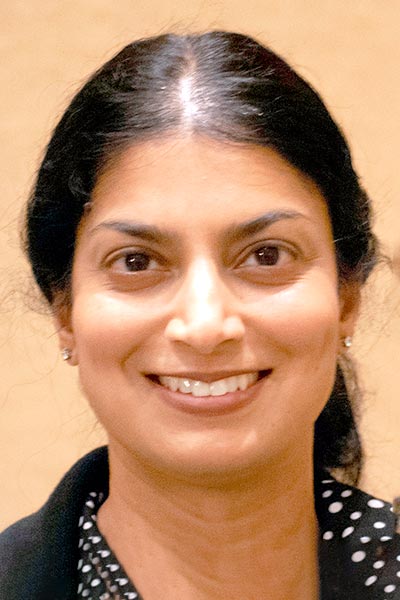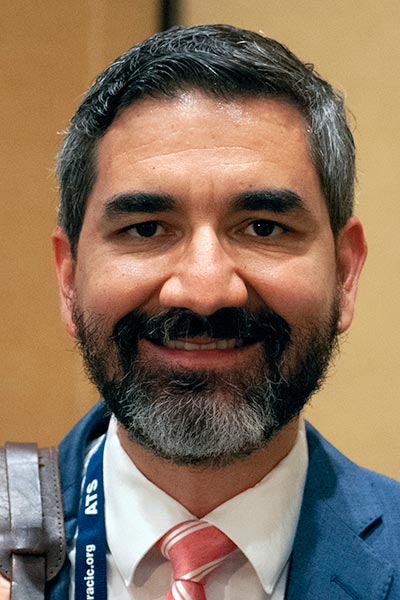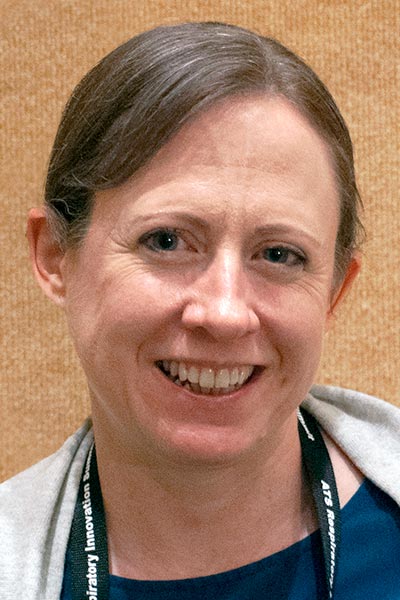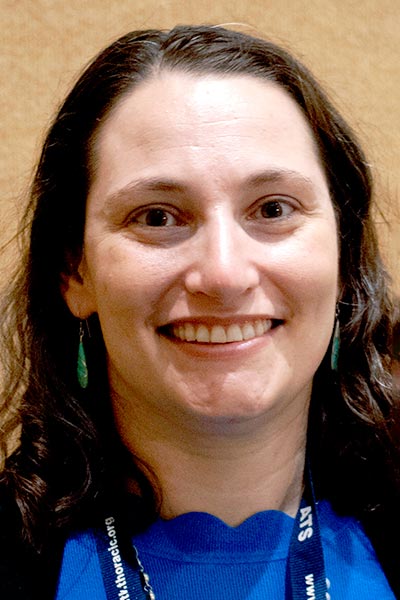The Clinical Core Curriculum sessions at ATS 2022 were designed to support clinicians who are engaged in maintenance of certification activities by providing updates on subjects that are not only included in recertification requirements, but also are timely and relevant to clinical practice in 2022. On Wednesday, May 18, the two-part Sleep Clinical Core Curriculum symposia featured five presentations covering key topic areas in sleep medicine.

Sleep Clinical Core Curriculum – Part 1
Kiran Maski, MD, MPH, Harvard Medical School/Boston Children’s Hospital, opened the session with a review of the diagnosis and management of narcolepsy.
Narcolepsy is a rare neurologic condition present in about .02 percent to .06 percent of patients worldwide, Dr. Maski said, and is categorized into two types—type 1, which is narcolepsy with cataplexy, and type 2, which is narcolepsy without cataplexy.
“Narcolepsy is a sleep-wake state imbalance problem. Patients primarily complain of daytime sleepiness, and this is the most severe and burdensome symptom that oftentimes presents to your clinic offices,” she said.
Sometimes, sleep is disrupted at night as well, she noted, with 30 percent to 90 percent of patients with narcolepsy reporting disrupted nighttime sleep characterized by a unique sleep fragmentation pattern where there are frequent wakings that are generally not long and there is usually a quick return to sleep.
“But more uniquely, narcolepsy is a condition of REM sleep dysregulation,” Dr. Maski said. “Narcolepsy type 1 is caused by loss of orexin neurons and cataplexy may present in partial or full form, but there can also be cataplectic facies.”
Current treatments for daytime sleepiness include traditional stimulants, modafinil, armodafinil, pitolisant, solriamfetol, and oxybates.
“For cataplexy, there’s less evidence for support of SSRI, SNRI, and TCA classes; however, clinically we use these medications all the time and I can tell you that they are effective, but there is evidence for pitolisant and oxybates,” Dr. Maski said.

Hugo L. Paz Y Mar, MD, University of Southern California, followed with a discussion of the medical and psychological consequences of insomnia.
“There are two definitions of insomnia—short-term insomnia where symptoms last less than three months, and chronic insomnia which is defined by symptoms that persist for at least three months and at least three times a week,” Dr. Paz Y Mar said. “The vast majority of the patients who come and see us in the outpatient clinic usually have had symptoms for years or even decades.”
Insomnia patients, he said, typically report difficulty falling asleep or staying asleep, early awakening, and some level of impaired daytime functions. Increasing evidence has associated insomnia with hypertension, coronary heart disease, heart failure, and cardiovascular mortality, and insomnia has also emerged as a risk factor in the development of type 2 diabetes.
“Additionally, we know that insomnia and depression frequently coexist in a bidirectional relationship,” he said. “We also know that better sleep improves depression outcomes. Patients with depression often have more severe symptoms when they develop insomnia, so it is important for us to provide the right approaches and therapies.”

Sabra Abbott, MD, PhD, Northwestern University Feinberg School of Medicine, concluded Part 1 of the symposium with a discussion of circadian rhythm disorders, specifically the impact of jet lag and the effects of shift work and the role of light and melatonin in regulating circadian timing.
“One of the most interesting and important properties of our circadian ‘clock’ is that not only does it continue on autonomously, but you can also reset it just like you would reset a clock on your wall, and those resetting signals are both time-of-day dependent and stimulus dependent,” Dr. Abbott said.
For example, she said that light in the biological evening delays circadian rhythms, while light in the biological morning advances circadian rhythms, and melatonin in the biological evenings advances circadian rhythms, while melatonin in the biological morning delays circadian rhythms.
“The key is that circadian treatments must be individualized and should focus on ‘patient time’ rather than ‘clock time’ in order to be most effective,” Dr. Abbott said.

Sleep Clinical Core Curriculum – Part 2
Anna Michelle May, MD, MS, of the VA Northeast Ohio Healthcare System, began Part 2 of the symposium with a review of the diagnosis and management of restless legs syndrome (RLS).
“Restless legs is very common, with a prevalence of five percent to 10 percent in European and North American populations,” Dr. May said. “It is very bothersome to patients. Symptoms cause a lot of concern and distress and there can be sleep effects, including sleep initiation and maintenance insomnia.”
Certain medications can trigger RLS symptoms, she said, including various first-generation antihistamines, antidepressants, and anti-psychotics.
“We have both nonpharmacologic and pharmacologic means of improving RL symptoms,” Dr. May said. “Nonpharmacologic approaches include massage, vibratory therapy, compression devices, exercise, heating pads or a warm bath, decreasing caffeine and alcohol, and treating other comorbid disorders such as sleep apnea.”
In terms of pharmacologic therapy, she said options include dopamine agonists, alpha-2-delta ligands, opioids, and iron supplementation.
“One of things you want to do when you first diagnose a patient is check the ferritin,” Dr. May said. “It’s also useful to check a fasting iron panel. Then, supplement if the ferritin is less than 50 and consider supplementing if it is less than 75 and the person is having symptoms.”

Chandra Jackson, PhD, of the National Institute of Environmental Health Sciences, concluded the symposium with a presentation on the social and environmental determinants of sleep health disparities.
Racial and ethnic minority populations, she said, are generally more likely to experience sleep deficiencies and sleep disorders, greater sleep onset latency, excessive daytime sleepiness, less slow-wave (or deep) sleep, and obstructive sleep apnea. Sleep deficiencies can also vary based on a variety of socioeconomic status indicators, such as income, education, occupation, and wealth.
“One recent study demonstrated that racial and ethnic disparities in sleep emerged between one and six months of life, and the differences were largely explained by socioeconomic status,” Dr. Jackson said. “And my research group has found sleep disparities among a nationally representative sample of pregnant women, which has implications for maternal-child health along with the physiological dysregulation that can occur starting earlier in life and accumulate over the life course, as well as across generations.”
Moving forward, she said, much more research is needed on the prevalence, incidence, morbidity, and mortality of sleep deficiencies for disadvantaged populations, and that integration between health disparity causal pathways and sleep and circadian-related mechanisms should be incorporated into research approaches and study designs.
Extend Your Learning Beyond San Francisco with ATS 2025 Conference Highlights

With so many valuable educational opportunities offered during the ATS 2025 International Conference, attendees are often forced to decide which sessions to prioritize. That’s why the Society is offering three ATS 2025 Conference Highlights packages for those unable to attend ATS 2025 San Francisco or attendees interested in continuing their education after the conference. Check out the packages and pick the one that’s right for you. Learn at your own pace, whenever and wherever you are!

